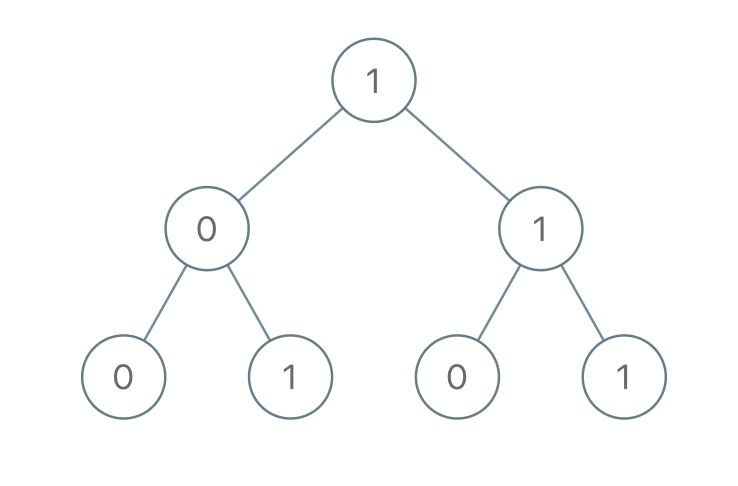1022.Sum of Root To Leaf Binary Numbers
1022.Sum of Root To Leaf Binary Numbers
难度:Easy
Given a binary tree, each node has value 0 or 1. Each root-to-leaf path represents a binary number starting with the most significant bit. For example, if the path is 0 -> 1 -> 1 -> 0 -> 1, then this could represent 01101 in binary, which is 13.
For all leaves in the tree, consider the numbers represented by the path from the root to that leaf.
Return the sum of these numbers.
Example 1: 
Input: [1,0,1,0,1,0,1]
Output: 22
Explanation: (100) + (101) + (110) + (111) = 4 + 5 + 6 + 7 = 22Note:
The number of nodes in the tree is between 1 and 1000. node.val is 0 or 1. The answer will not exceed 2^31 - 1.
从上往下递归,可以讲父节点的值乘二后加到左右孩子节点中继续递归。
/**
* Definition for a binary tree node.
* struct TreeNode {
* int val;
* TreeNode *left;
* TreeNode *right;
* TreeNode(int x) : val(x), left(NULL), right(NULL) {}
* };
*/
class Solution {
public:
int sumRootToLeaf(TreeNode* root) {
if(!root) return 0;
if(!root->left && !root->right)
return root->val;
if(root->left) root->left->val +=root->val*2;
if(root->right) root->right->val +=root->val *2;
return sumRootToLeaf(root->left)+sumRootToLeaf(root->right);
}
};执行用时 :4 ms, 在所有 C++ 提交中击败了98.31%的用户 内存消耗 :16.9 MB, 在所有 C++ 提交中击败了100.00%的用户
Last updated
Was this helpful?